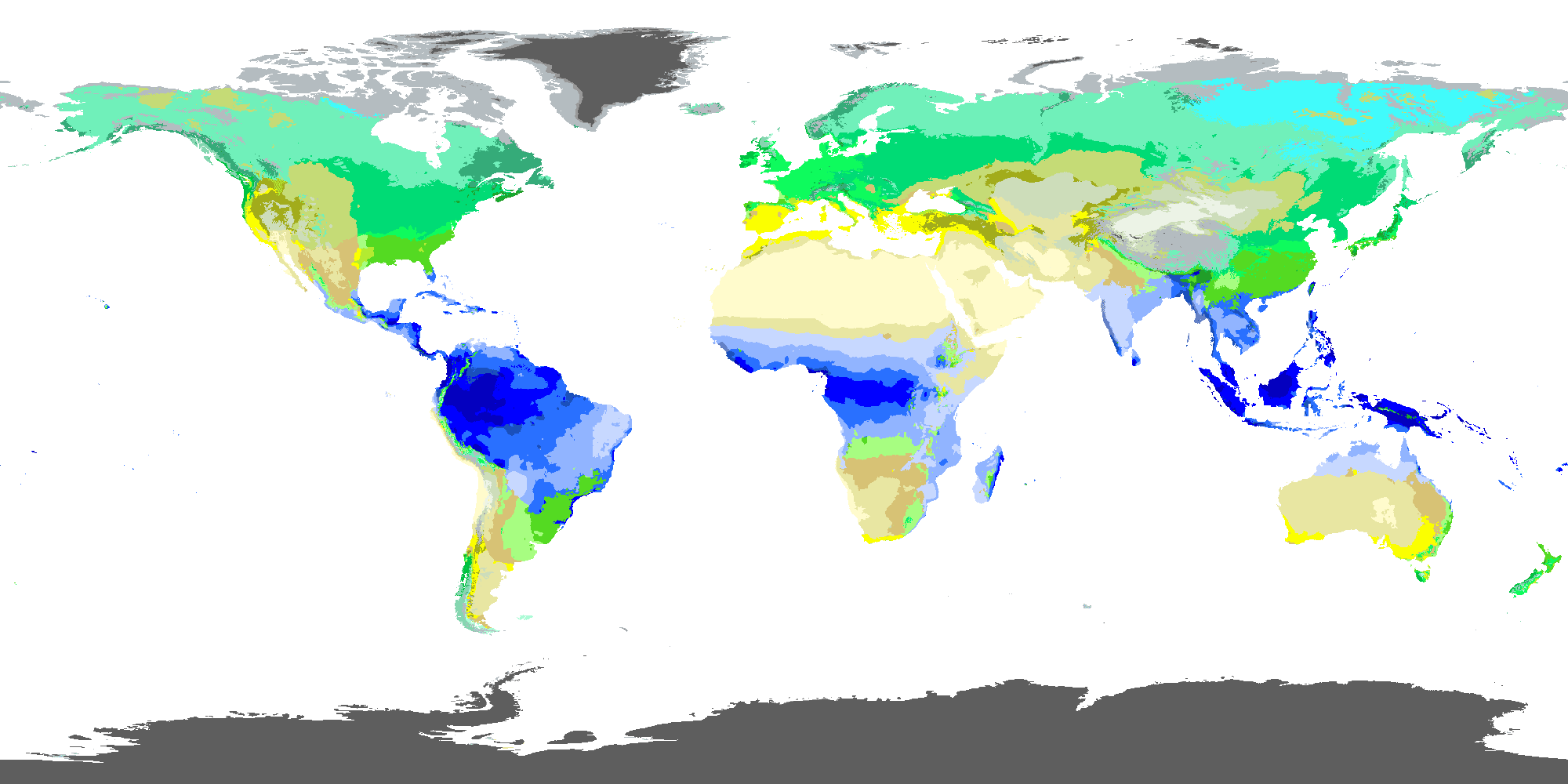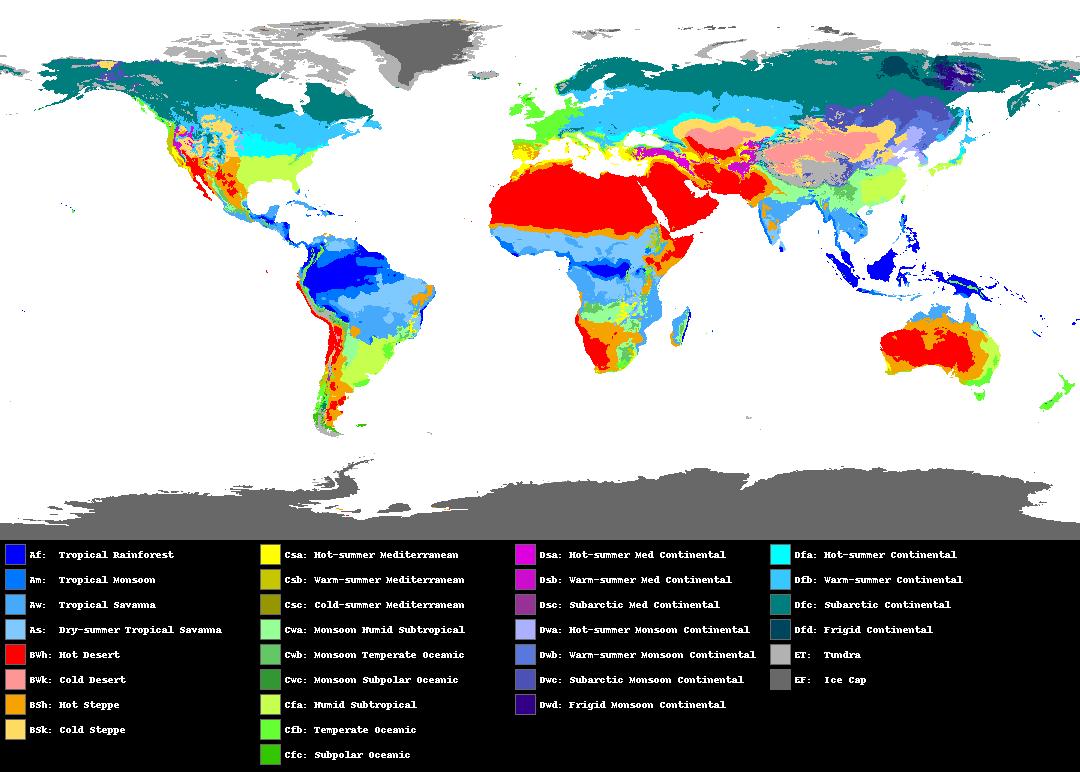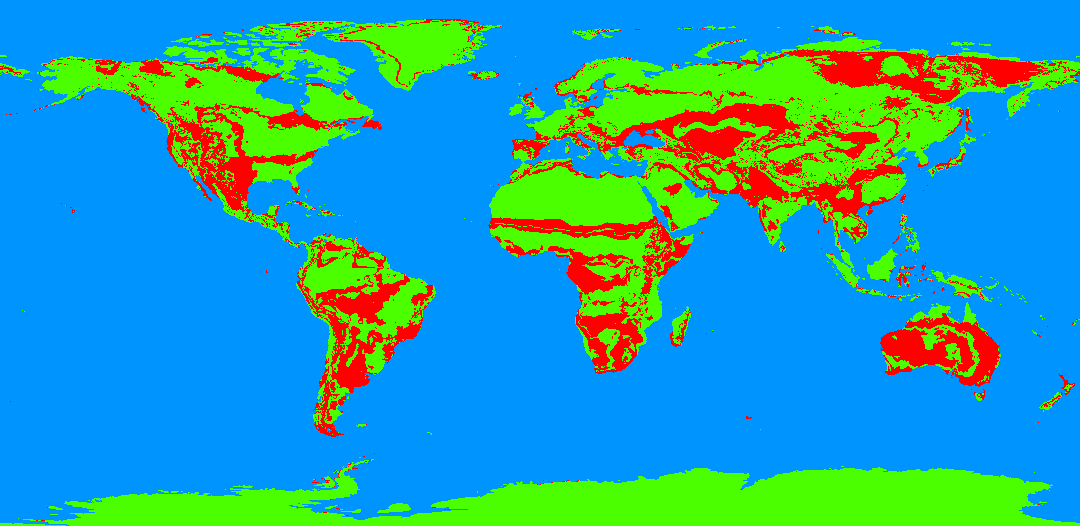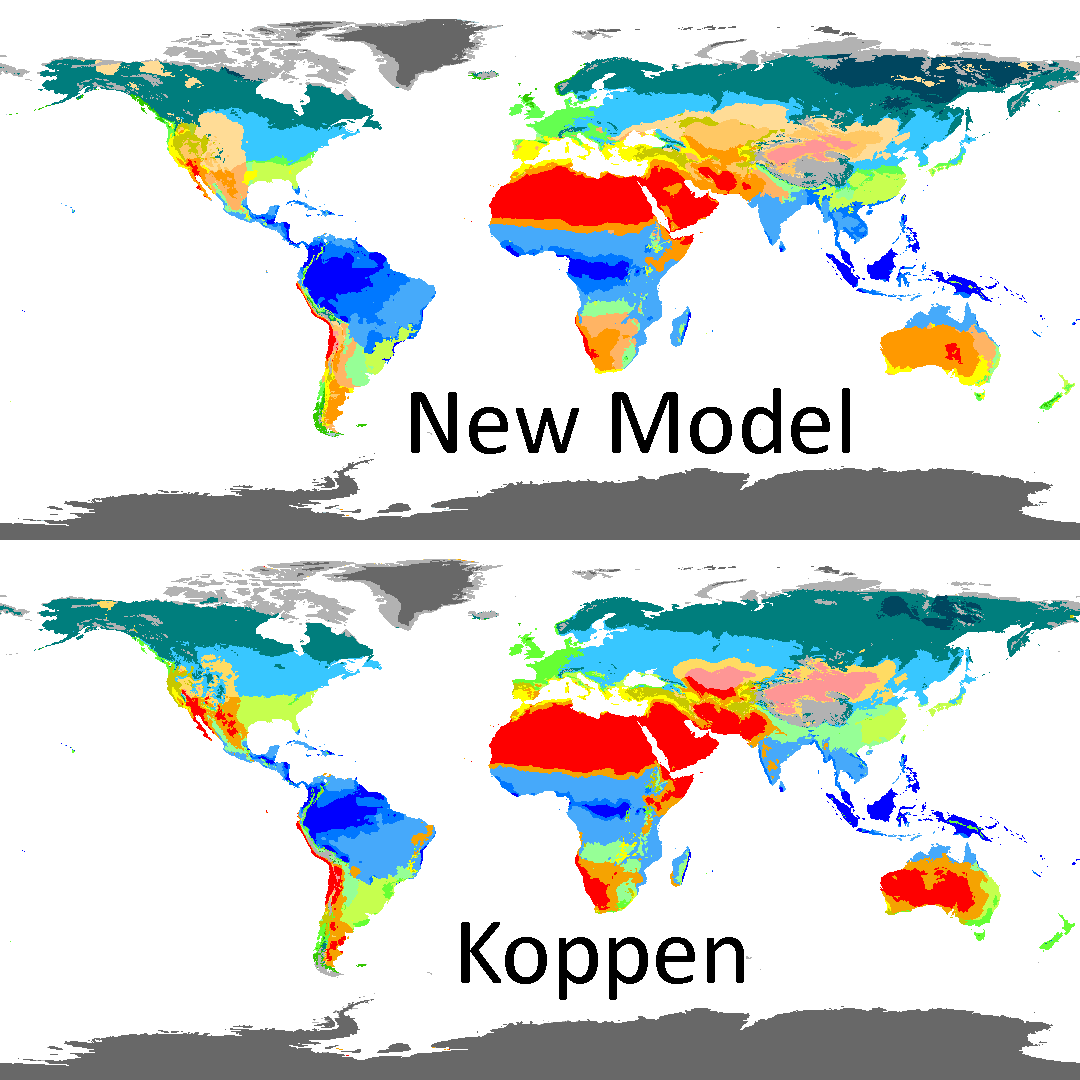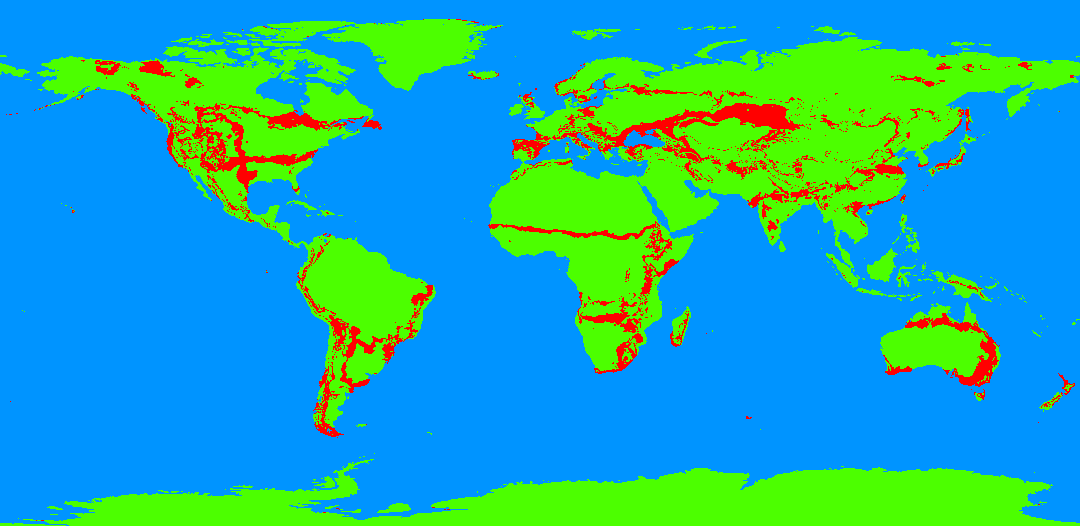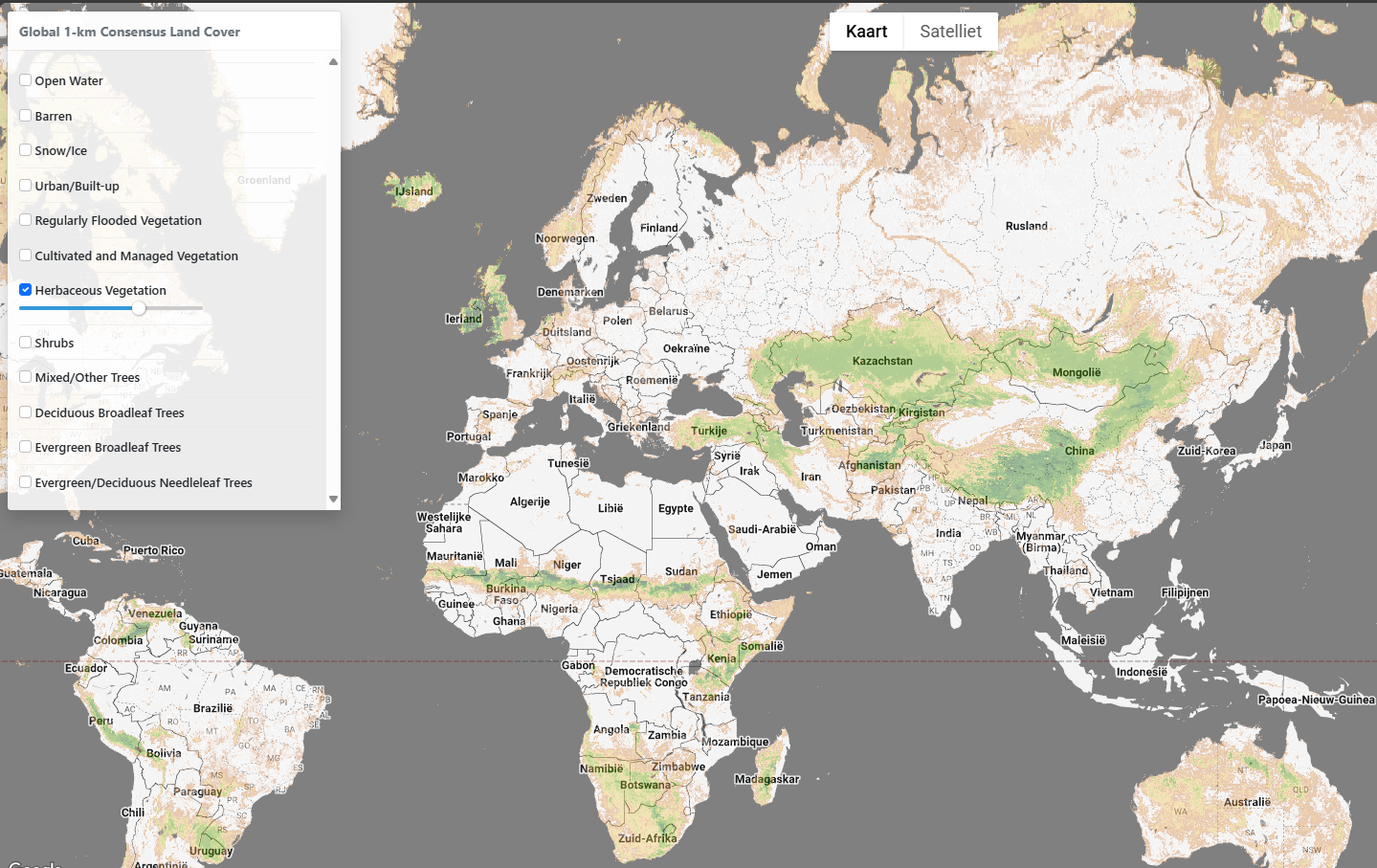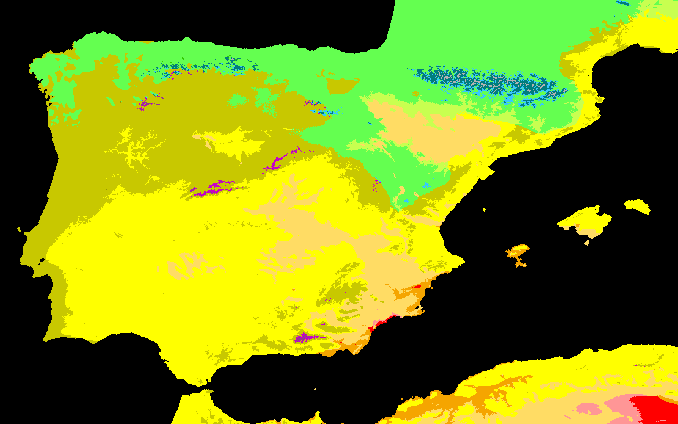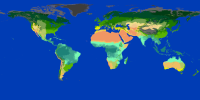Tinto seems to have gone with a simplified version of the koppen system, while I won't argue at length why they should change now so far in development, I think it might be worth discussing alternate systems which either have simply more categories or fundamentally define climate using more modern metrics that Koppen himself didn't have.
Really this is about discussing this:

 worldbuildingpasta.blogspot.com
worldbuildingpasta.blogspot.com

This is a worldbuilding blog and here the author discusses his own system to replace koppen and try to achieve its intended goal, meaning predicting biome. The reason behind this project is partially to let it be extendable for worldbuilding purposes but really this seems an outright improvement to me for earth too and most of the article discusses earth-like stuff.
These are the factors he uses and all of these can be readily calculated for earth(sources are readily available and I think the one I have has virtually everything):
MinT = Absolute Minimum Temperature(proxied with monthly average temperature of the coldest month)
Ar = Aridity Factor(from 0 to 1, 1 means less arid lol), well it's aridity
GAr = Growth-Adjusted Aridity Factor, measures how much moisture coincided with the warm/hot growth period
GINT = Degree-Days of Low Temperature(under 10C I think), measures the "cost" that non-cold adapted plant have to endure before swapping to a seasonal leaf shedding strategy
GDD = Degree-Days of Warm Temperature(above 5C I think), predicts how much tree can grow annualy
GDDz = Degree-Days of Cool Temperature(above 0C), predicts how much cold adapted non-tree plants can grow annualy
GS = Precipation Adjusted for Seasonality, measures how much plants rely on stored ground water or other environmental sources during summer drough
Not all climates here are necessary, I think the distinction between Tundra CFa and CFb or Ice Cap/Barren CG and CI to be pointless, sub mediterranean CMa and CMb are also questionable. The rest though seems worth considering and that's like 20 climates over the current 8.
I can't really add much without just paraphrasing what's written here. I hope this is of some use for any future modder.
Really this is about discussing this:

Beyond the Köppen-Geiger Climate Classification System, Part II: A New Bioclimate Classification System
This is the second part of a short series in which I'm investigating alternate approaches to climate classifica...

This is a worldbuilding blog and here the author discusses his own system to replace koppen and try to achieve its intended goal, meaning predicting biome. The reason behind this project is partially to let it be extendable for worldbuilding purposes but really this seems an outright improvement to me for earth too and most of the article discusses earth-like stuff.
These are the factors he uses and all of these can be readily calculated for earth(sources are readily available and I think the one I have has virtually everything):
MinT = Absolute Minimum Temperature(proxied with monthly average temperature of the coldest month)
Ar = Aridity Factor(from 0 to 1, 1 means less arid lol), well it's aridity
GAr = Growth-Adjusted Aridity Factor, measures how much moisture coincided with the warm/hot growth period
GINT = Degree-Days of Low Temperature(under 10C I think), measures the "cost" that non-cold adapted plant have to endure before swapping to a seasonal leaf shedding strategy
GDD = Degree-Days of Warm Temperature(above 5C I think), predicts how much tree can grow annualy
GDDz = Degree-Days of Cool Temperature(above 0C), predicts how much cold adapted non-tree plants can grow annualy
GS = Precipation Adjusted for Seasonality, measures how much plants rely on stored ground water or other environmental sources during summer drough
Not all climates here are necessary, I think the distinction between Tundra CFa and CFb or Ice Cap/Barren CG and CI to be pointless, sub mediterranean CMa and CMb are also questionable. The rest though seems worth considering and that's like 20 climates over the current 8.
I can't really add much without just paraphrasing what's written here. I hope this is of some use for any future modder.
Last edited:
- 9
- 5
- 2
- 1



